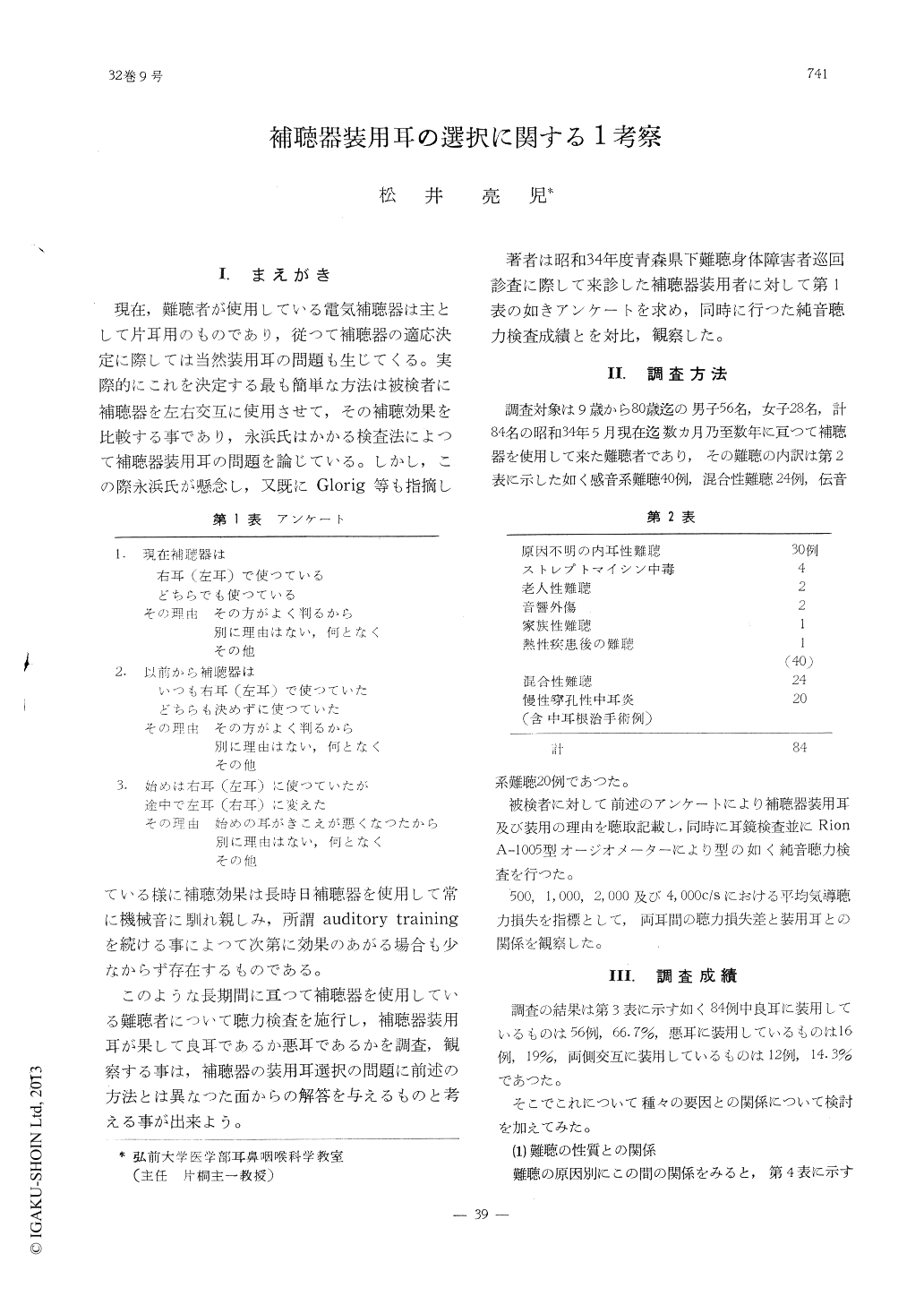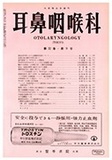- 有料閲覧
- 文献概要
- 1ページ目
I.まえがき
現在,難聴者が使用している電気補聴器は主として片耳用のものであり,従つて補聴器の適応決定に際しては当然装用耳の問題も生じてくる。実際的にこれを決定する最も簡単な方法は被検者に補聴器を左右交互に使用させて,その補聴効果を比較する事であり,永浜氏はかかる検査法によつて補聴器装用耳の問題を論じている。しかし,この際永浜氏が懸念し,又既にGlorig等も指摘している様に補聴効果は長時日補聴器を使用して常に機械音に馴れ親しみ,所謂auditory trainingを続ける事によつて次第に効果のあがる場合も少なからず存在するものである。
このような長期間に亘つて補聴器を使用している難聴者について聴力検査を施行し,補聴器装用耳が果して良耳であるか悪耳であるかを調査,観察する事は,補聴器の装用耳選択の問題に前述の方法とは異なつた面からの解答を与えるものと考える事が出来よう。
In order to establish a basis upon which the use of hearing aids may be rested, hearing tests in 84 cases of hard of hearing, that lasted for various period of duration from 1 month to several years in which the aids were used, were made. These cases consisted of 40 cases of nerve deafness, 24 of mixed deafness and 20 of conduction deafness. The point whether the aids were used on the good or bad ear was also noted.
From this study the author comes to a conclusion that the hearing aid when needed should be used on the good ear of the two : but, when both ears are alike in the degree of deafness the aid may be used in either ear.

Copyright © 1960, Igaku-Shoin Ltd. All rights reserved.


